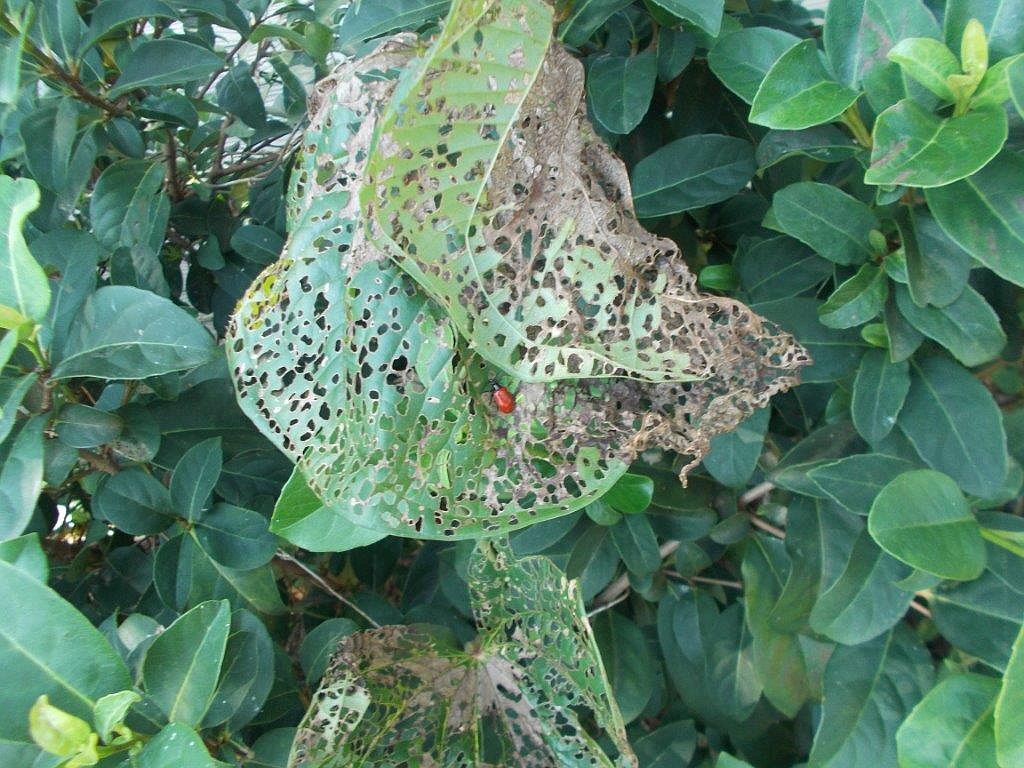- May 1, 2024
-
-
Loading

Loading

Waterlefe is going to battle with the wild side.
The community has been fighting off the jungle this summer but is on track to beat back invasive, non-native plants after approving two alternative remedies.
In August, the Community Development District board approved the use of air potato leaf beetles to reduce the growing air potato vines that had been spreading from Waterlefe’s conservation areas and the community’s southern wall into private lawns.
The CDD paid for quarterly chemical applications, but wanted a more sustainable and less expensive option, said Tyree Brown, operations manager for Rizzetta & Company, the Waterlefe district management company.
“It grows quickly and is difficult to deal with, so we looked at alternative methods,” he said.
Brown researched the beetles, which are a part of an experimental program through the U.S. Department of Agriculture and the University of Florida. Because the program is still in its experimental research phase, the beetles were free and delivered to Waterlefe by the state. Three-hundred beetles were released in late August, and Brown said he’s already seen improvements.
“Beetles are at work on the potato vines and they’re doing very well,” said Ken Bumgarner, CDD chairman.
Off of dry land, the CDD is seeking a scaly solution for its ponds: grass carp. The board approved a plan to acquire the fish, which requires a permit from the Florida Fish and Wildlife Conservation Commission.
Some of the community’s ponds and canals are continually clogged by hydrilla, a submersed perennial herb originating from Africa and Southeast Asia. The plant has become an invasive species in many parts of Florida, according to the FWC's website, myfwc.com.
The plant can grow an inch a day and clog waterways, reduce water oxygen levels and provide a breeding ground for mosquitoes.
“We need to start it in the canal,” said Rosalyn Warner, a CDD supervisor. “When you can’t get a boat out, there is a problem.”
The ponds also get lots of grass clippings in them from nearby grass-mowing and stormwater runoff, which can cause algae to grow.
Gary Morse, regional spokesman for FWC, said before acquiring the permit for the carp, Waterlefe must install a barrier system to prevent fish from leaving the community and entering natural habitats. The Manatee River, which sits on the northern border of the development, is one such habitat. However, the carp don’t pose a serious threat to native wildlife already living in the community.
“They do eat some native vegetation, but (they) especially like hydrilla,” Morse said.
The fish cost $6 to $7 each and come sterilized so they cannot multiply, Brown said. These fish are often referred to as triploid carp, which is another term for sterile fish. After installing the barriers, the FWC will make a site visit and determine how many fish Waterlefe can have per body of water. The fish can grow quite large — according to the FWC website, the longest carp caught in Florida was 56 inches long — but won’t outgrow their ponds: “If you have an aquarium and you put a fish in it, it will grow to the aquarium; they won’t overgrow their habitat,” Brown said.
Waterlefe plans to start with just a few bodies of water, maybe four, to see how the fish work and monitor their success.
“We’ll start with a minimal number since they eat other things, not just hydrilla,” Bumgarner said.